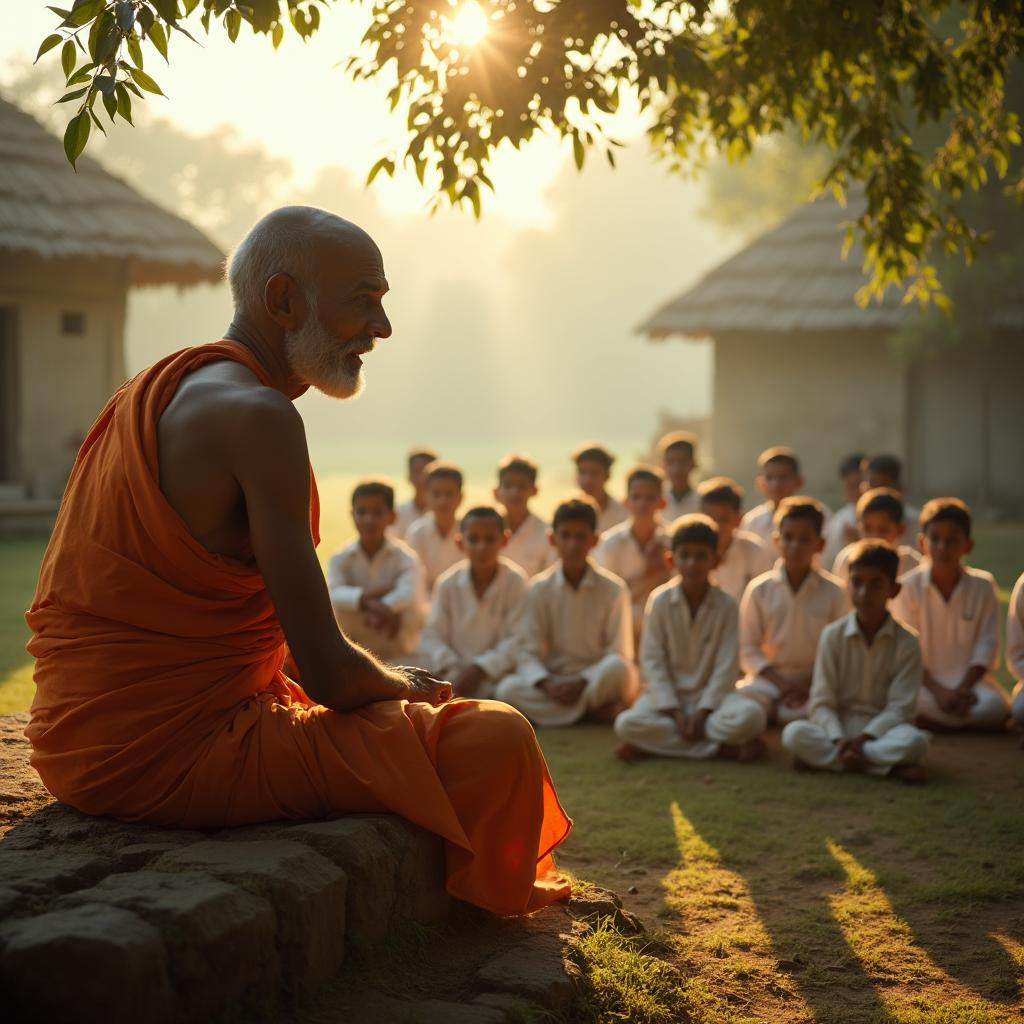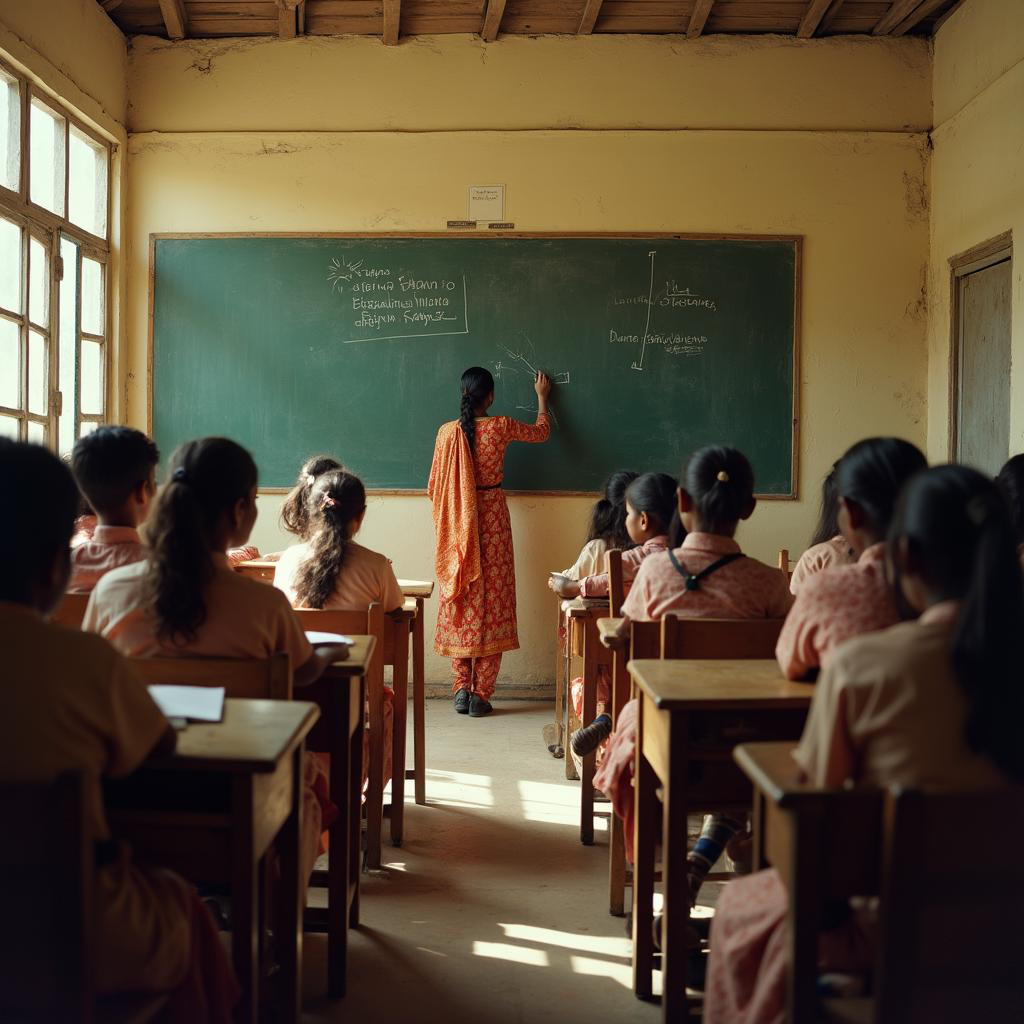There’s a particular smell of chalk dust that lingers in memory a smell that instantly brings back the image of your favourite teacher’s handwriting on the board. For some, it’s the sound of a duster being slapped clean against the wall. For others, it’s the thrill of being chosen to collect homework notebooks or sneak an extra piece of chalk from the tray. These small rituals stitched together our childhoods. And yet, while the chalkboard remains a powerful symbol, the way India teaches has never stood still. From the Gurukul system to Nalanda’s lecture halls, from colonial classrooms to today’s Google Meets, the idea of a classroom has always been evolving. This Teachers’ Day, let’s journey through history to uncover what it teaches us not only about schools, but about our role as parents, too.
Table of contents [Show]
- Nalanda & Takshashila: India’s First Universities
- Colonial Classrooms: The Age of Rote
- The Digital Turn: Classrooms Without Walls
- Parents as the First Teachers
- Storytelling as the Oldest Classroom
- Global Echoes of the Teacher–Student Bond
- Teachers in 2025: Between Burnout and Brilliance
- What Teachers’ Day Teaches Parents
- FAQs
The Gurukul Era: Learning as Living
In ancient India, education began in the Gurukul a forest hermitage where children lived with their guru. Lessons weren’t confined to texts; they were embedded in everyday life. The gurukul model emphasised values before knowledge. Discipline, humility, respect, and service were as essential as learning scripture or mathematics. Children fetched water, tended animals, cooked meals, and cleaned the ashram, ensuring that humility and responsibility became second nature. Education was tailored to the individual; the guru knew each student closely, shaping guidance to fit their personality and needs.

For parents today, the gurukul reminds us that children continue to learn more from what they see us do than what we ask them to do. Inviting them into daily routines whether cooking together, watering plants, or caring for a pet can recreate that spirit of hands-on learning at home.
Nalanda & Takshashila: India’s First Universities
By the 5th century CE, India had already given the world two of its greatest centres of learning Nalanda and Takshashila. These universities attracted scholars from across Asia, from Tibet to Korea and China. The curriculum extended far beyond religious texts, encompassing medicine, astronomy, mathematics, law, literature, and even diplomacy. Students from diverse faiths and regions studied side by side, exchanging perspectives and broadening their horizons. Knowledge was seen as a collective resource, safeguarded in libraries that housed thousands of manuscripts. The spirit of Nalanda shows parents today the value of diversity. When children are exposed to different languages, foods, stories, and communities, their sense of curiosity and inclusivity deepens. Homes, like Nalanda, can become microcosms of pluralism where differences are celebrated as pathways to learning.
Colonial Classrooms: The Age of Rote
The arrival of the British brought with it a very different kind of education system. Classrooms were restructured to create clerks and administrators for colonial offices, not thinkers or innovators. Uniformity became more important than individuality, with standardised curricula designed to maintain order. Hierarchy and rigid discipline were emphasised, and obedience was valued over questioning. The focus shifted heavily towards rote memorisation, sidelining creativity and critical thought. The hangover of this system still lingers in India’s exam-heavy schooling, where marks often matter more than curiosity. Parents can counter this legacy by creating space for children to ask questions and explore their “whys.” Encouraging open-ended thinking at home ensures that learning does not stop at the memorisation of textbooks but expands into a lifelong practice of wonder and exploration.
The Digital Turn: Classrooms Without Walls
The 21st century has transformed education once again. Smart boards, online apps, video tutorials, and AI-powered learning tools have changed how children access knowledge. The pandemic accelerated this shift dramatically, making even kindergarteners familiar with Zoom and Google Classroom. Digital learning opened remarkable opportunities, a child in Jaipur could now take French lessons from a Parisian tutor or explore coding classes from Silicon Valley. Yet, this digital revolution brought challenges as well. While it increased access, it also exposed the stark digital divide between children who have resources and those who do not. It expanded possibilities for global exposure, but it also came with shorter attention spans and overstimulation. For parents, the message is clear: technology can never replace teachers. It is a tool, not a substitute. Guiding children towards mindful screen use, curating what they watch, and balancing their online lessons with real-world play is essential for raising healthy, well-rounded learners.
Parents as the First Teachers
Indian philosophy has long recognised parents as the child’s first gurus. Before stepping into a classroom, a child begins their education at home. They learn how to say thank you, how to resolve disagreements, how to treat helpers, and how to love and care for pets. Every word, gesture, and action is absorbed. The Upanishads capture this beautifully: Matru devo bhava, Pitru devo bhava, honour your mother and father as divine. This reminds us that our daily choices create the first textbooks our children ever read. Teachers in schools add layers of knowledge, but parents shape the foundation of character. Celebrating Teachers’ Day, therefore, is as much about honouring school educators as it is about reflecting on our own roles within the home.
Storytelling as the Oldest Classroom
Before classrooms and curriculums, stories were India’s most powerful teaching tool. Tales from the Panchatantra, Jataka, and Hitopadesha were designed to slip wisdom into young minds through animal adventures and moral fables. Storytelling has always been about more than entertainment; it has been about transmitting values, empathy, wit, resourcefulness, and resilience. Even today, storytelling remains one of the simplest yet most profound teaching strategies. A bedtime folktale lingers in memory long after a cartoon episode fades. Parents can reclaim this ancient tradition by weaving stories into their child’s daily routine, allowing them to carry forward wisdom wrapped in wonder.
Global Echoes of the Teacher–Student Bond
The deep reverence for teachers is not unique to India. Across cultures, the teacher–student relationship has always been treated as sacred. In Japan, the term sensei conveys profound respect. In Africa, griots passed down history through song and oral storytelling. In Greece, Plato mentored Aristotle, who in turn shaped Alexander the Great a lineage of influence that transformed history. The common thread across these traditions is that teachers are not merely transmitters of information; they are architects of values and vision. For parents, this is a reminder that the way children regard their teachers can shape how they embrace guidance throughout their lives.
Teachers in 2025: Between Burnout and Brilliance
In 2025, teachers walk a tightrope between burnout and brilliance. They face overcrowded classrooms, heightened parental expectations, curriculum overload, and the pressures of adapting to digital platforms. Yet, many rise to the challenge with creativity. Consider Sonia Kapoor, a Mumbai teacher who recently won the National Teachers’ Award for turning her classroom into a hub of innovation using board games to teach history, magic kits to simplify science, and vegetable gardens to connect children with nature. Or Shweta Sharma from Jharkhand, who created “Abua Jadui Pitara,” a bundle of local folk art and craft that transformed her teaching into an immersive cultural experience. These examples remind us that the role of a teacher is evolving, but its heart remains the same: to ignite curiosity. Parents can support this by respecting the labour of teachers, trusting their methods, and encouraging their children to see educators as guides, not just authority figures.
What Teachers’ Day Teaches Parents
Teachers’ Day is more than flowers and handmade cards. It is a reminder that teaching is the world’s oldest act of love and continuity. From chalkboards to digital screens, from ancient gurukuls to smart classrooms, the essence of education has been about lighting a lamp rather than filling a vessel. As parents, we too are teachers, modelling values that echo far beyond our homes. As teachers, we remain learners, guided by the questions children ask us daily. And as children, we are all students of life itself. This Teachers’ Day, let’s honour not just the classrooms we grew up in, but the countless teachers, past and present; who continue to shape the world’s future.
FAQs
Q1. Why do we celebrate Teachers’ Day in India?
It marks the birth anniversary of Dr. Sarvepalli Radhakrishnan, India’s second President and a celebrated teacher who believed that teaching was the noblest profession.
Q2. How can parents celebrate Teachers’ Day?
Encourage children to write a gratitude note, make simple handmade gifts, or share a memory of their favourite teacher. Even a small, thoughtful act reinforces respect.
Q3. What is one ancient tradition parents can revive?
Storytelling is perhaps the most enduring. Folktales, epics, and family stories continue to pass on wisdom in ways that worksheets never can.
Q4. How has the role of teachers changed in 2025?
Teachers are no longer just sources of knowledge. They are facilitators of emotional literacy, creativity, and digital wisdom, helping children navigate a complex world.
Q5. Are parents truly considered teachers too?
Yes. In Indian philosophy, the parent is always the first guru, shaping a child’s foundation long before the school bell rings.
For more stories that shape today’s parents, follow Mapabear, India’s first premium digital magazine for parents and pet parents.




 Guiding and Empowering Parents with fact-checked excellence -
Guiding and Empowering Parents with fact-checked excellence -